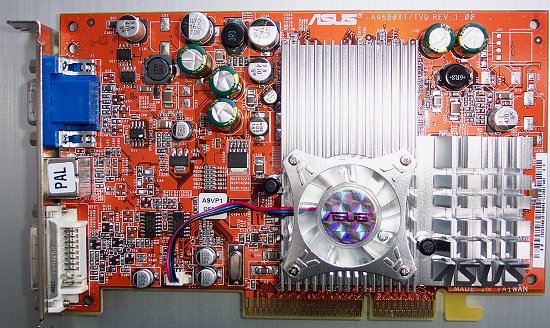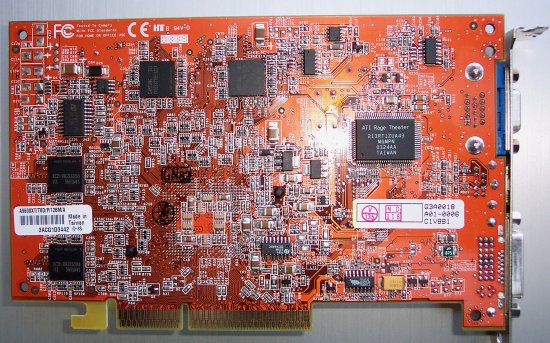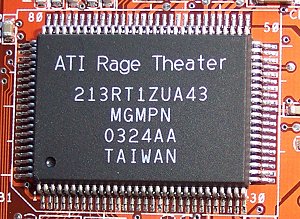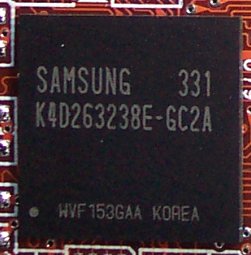First look
We'll take a look at the card first and then discuss how it will fare against its competition, which now comes from NVIDIA's FX 5700 range. So without further ado, let's present the ASUS RADEON 9600XT/TVD.
ASUS seems to be moving to an orange PCB colour for its range of graphics cards. Our review of the ASUS RADEON 9800XT highlighted this colour, which is a love or hate kind of thing. What immediately strikes us is just how small the card as and, in particular, just how miniscule the heatsink assembly looks. We've now got used to having an industrial-class heatsink being present on mid and high-end cards. It uses a simple ribbed aluminium approach for maximum heat dispersal, and it manages to cover the tiny BGA memory that's located underneath. Also, despite a ramp up in pure GPU frequency, we appreciate that the card doesn't require axillary power.

The heatsink is a low-profile affair. ASUS' neat touches extend to having its name incorporated into the design. This is purely subjective, but it doesn't feel like an expensive card. That's either a good or bad thing, depending on how you feel about it. Huge heatsinks and esoteric coolers simply add cost to the overall package. What we would have liked, really, is to have a larger fan spin at a lower RPM than the one supplied with the card. It's not shrill, and it can be controlled via ASUS SmartDoctor software, but we feel that larger fans offer a better noise profile for the same cooling ability.

The back of the 9600XT/TVD houses the expected TinyBGA memory and ATI's Rage Theater VIVO chip.


It would be nice to state that the Rage Theater chip in evidence here is the sam as the all-singing, all-dancing one found on the All-In-Wonder series, but that isn't the case, sadly. If it was, there would be little need for the AIW line at all. The chip shown here is able to undertake basic Video-In and Video-Out work (VIVO). In that respect, it's more like Philips' 7108AE series than the full-blown AIW offering. We'll have a look at it in action a little later on.
The RAM chips are supplied by Samsung. It's interesting to note that identical chips are used on a Crucial Radeon 9800 Pro, which runs its RAM at a native 680MHz. Samsung's own information pages, here, confirm that it's rated to a nominal 700MHz DDR. It seems like ASUS is being very conservative; that's a good thing for the enthusiast.

My everlasting hopes of a twin DVI model were dashed again. We have the standard HD15, S-Video (for the RT VIVO) and a single DVI connection on the right. A decent enough approach, and we like the fact that ASUS has deviated from the reference design. It's always pleasing to see individuality in this homogeneous world.









